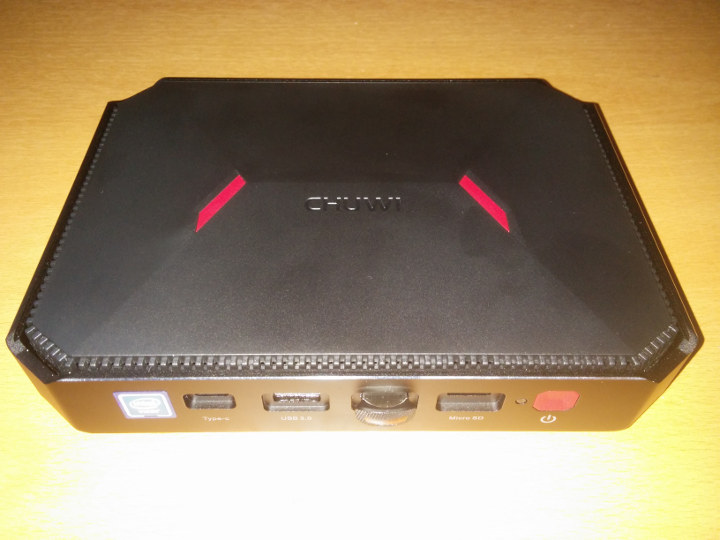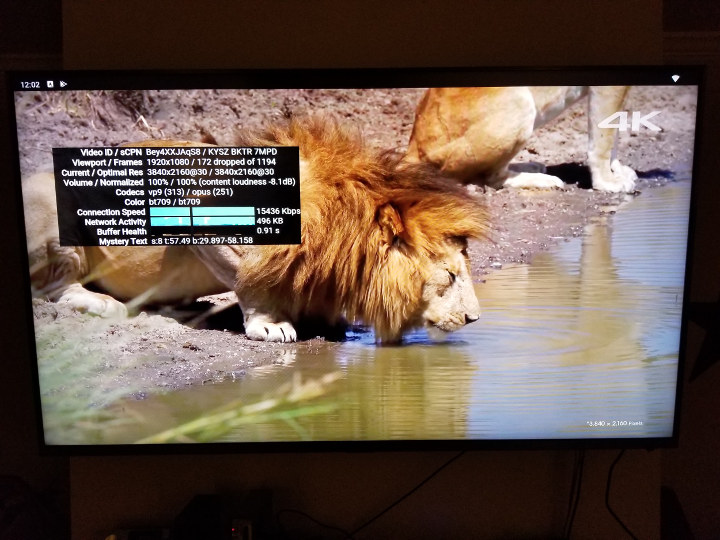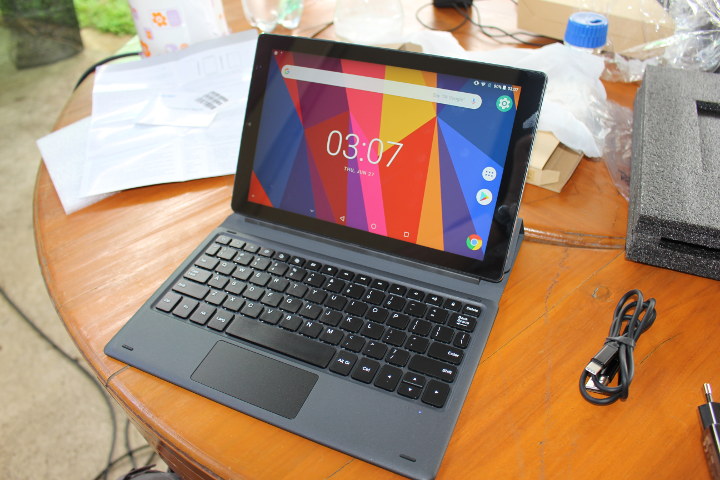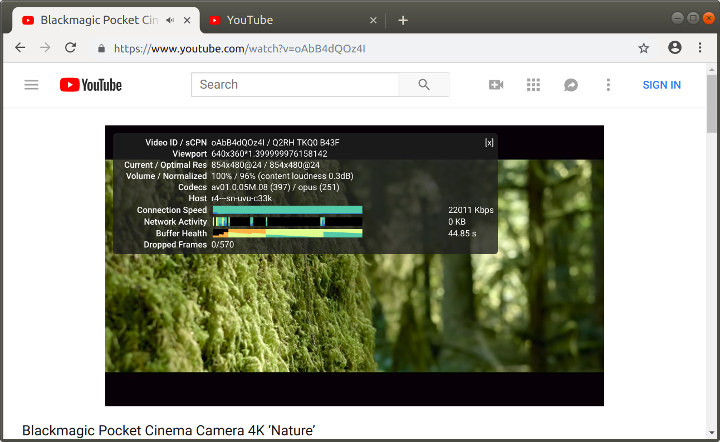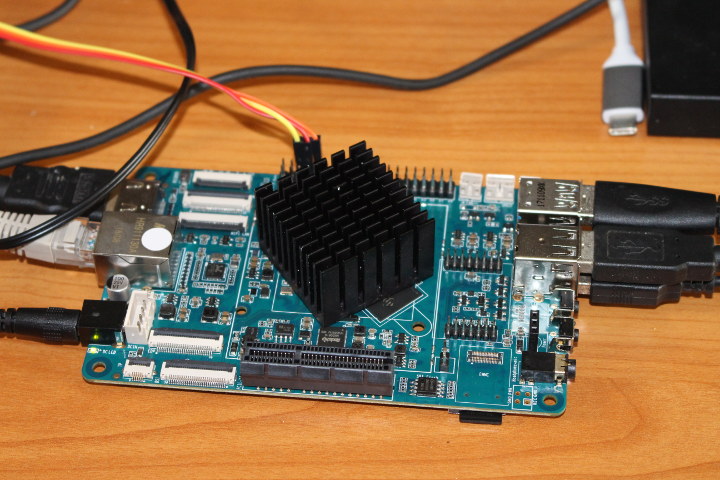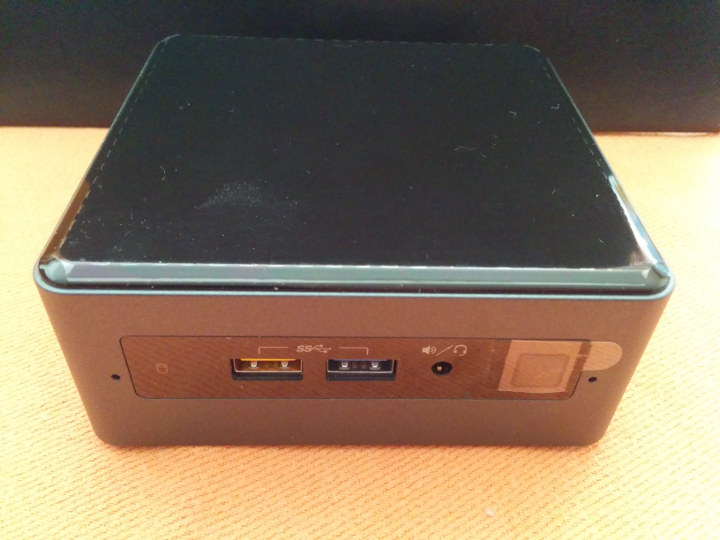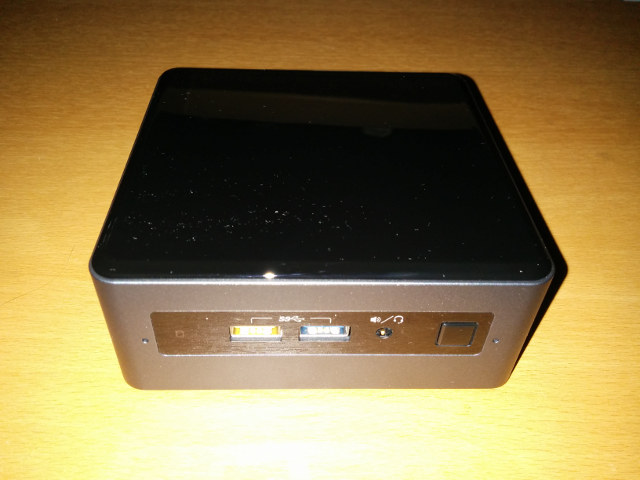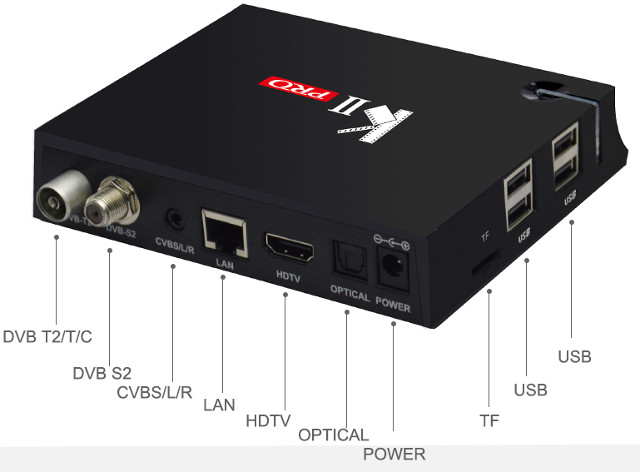CHUWI has released a new mini PC called the GBox Pro. This is a passively cooled mini PC that uses the slightly older Apollo Lake Intel Atom x7-E3950 CPU which is a quad core 4-thread 1.60 GHz processor boosting to 2.00 GHz with Intel’s HD Graphics 505. The GBox Pro is somewhat physically larger than typical recent mini PCs and consists of a 189 x 139 x 39 mm (7.44 x 5.47 x 1.54 inches) rectangular case with a front panel that includes the power button, micro SD slot, a couple of USB 3.0 ports and a Type-C USB port and then on the rear, a headphone jack, two USB 2.0 ports, a Gigabit ethernet port, an HDMI (2.0) port and a VGA interface. The full specifications include: The GBox Pro comes with 64GB of eMMC with pre-installed Windows 10 Home (version 1809 OS build 17763.316) together with 4GB of […]
Beelink GT-King (Amlogic S922X) TV Box Review
Rant Karl here. I have been playing around with Android boxes for several years. Unfortunately, some fundamental issues from when I first started playing around with these boxes are still there. They have come a long way since the MK808 with Rockchip RK3066 processor. The MK808 was my first endeavor into Android on the TV in 2013. I can’t believe it’s been nearly 6 years. In 2014 Google introduced Android TV and the Nexus Player. It was designed for a TV and controller. The first boxes/sticks adapted the stock Android experience to run on a TV, but without a touch interface the experience was/is not optimal. Sure you get thousands and thousands of apps but a lot of them don’t work. Unfortunately, this hasn’t changed much. If these boxes came with Linux and Android I don’t think I would complain as much. I would consider it a tinkering box. But […]
Chuwi HiPAD LTE Tablet Review – Part 2: Android 8.0
Last month, I received HiPad LTE tablet, and in the first part of the review I checked out the specifications of the 10″ tablet with a MediaTek Helio X27 deca-core processor, 3GB RAM, 32 GB storage, and had a look at the accessories including the keyboard dock. I’ve now had more time to actually play with the device, so I’ll report my experience with Android 8.0, and the pros and cons of the latest Chuwi tablet. General Impressions My previous tablet was Onda V18 Pro, and Chuwi HiPad LTE is clearly an upgrade thanks to the faster Heliox X27 deca-core processor coupled with 3GB of RAM. The 10.1″ display has a 1920×1200 resolution, not quite as good as the 2560×1600 resolution of the Onda tablet, but I still found the screen to be crispy and sharp. I found the tablet to be great for browsing the web and watching YouTube […]
AV1 Video Samples Now Available on YouTube & Netflix
We first covered AV1 royalty-free, open source video codec in 2016, which with backing from companies like Google, Amazon, Intel, Microsoft, and many others with the aim to compete with H.265, and lower the cost of delivering video both thanks to a better compression ratio, and the lack of royalties. Since then progress has been made, with AV1 specifications released last March, and now both YouTube and Netflix are offering some beta AV1 video samples for testing. If you want to play some videos in AV1 format in YouTube as I did in the screenshot above, you’d need to install a very recent (beta) version of Chrome or Firefox, follow the other instructions as explained in YouTube’s AV1 beta playlist: Support for AV1 in MP4 within Media Source is available in Chrome 70, and Firefox 63 builds newer than September 13 with the media.av1.enabled pref set. Using a supported browser […]
RockPro64 RK3399 Board Linux Review with Ubuntu 18.04 + LXDE
Let’s do one more RK3399 Linux review using Pine64 RockPro64 development board. After shortly checking out the hardware, I’ll test Ubuntu 18.04 “Bionic” LXDE on the board, test 3D graphics acceleration, video playback, USB storage and network performance among other things on the board. RockPro64 Board Unboxing The board came in a cardboard package, and the sticker made it clear I had received the 2GB LPDDR4 version. Even after FriendlyELEC NanoPi M4 announcement, Rockchip ROCKPro64 is still the cheapest RK3399 development board around, so it should come as no surprise that the board does not come with any accessories by default. Another way to keep the price low was not to include any built-in storage apart from SPI flash, so instead most people will either boot from micro SD card or an eMMC flash module both of which need to be purchase separately. Another cost-saving is the lack of built-in […]
Intel NUC Kit NUC7PJYH Review – An Intel Gemini Lake Pentium Silver J5005 Barebone Mini PC
When Intel released their latest NUC Gemini Lake mini PCs they prioritized cost over performance. As a result the processor they chose for the ‘Intel NUC 7 Essential’ mini PC is somewhat underwhelming. Fortunately they released another model in the series, the rather misleadingly named ‘Intel NUC Kit NUC7PJYH’ which is is actually a ‘barebones’ mini PC just needing a stick or two of RAM and an SSD for storage. It contains an Intel Pentium Silver Processor J5005 SOC which is a quad core processor bursting up to 2.80 GHz together with a slightly more powerful Intel UHD Graphics 605 processor that is capable of 4K support at 60Hz. Visually it is no different to the Celeron NUC reviewed earlier in that it is physically small consisting of an approximately 4.5″ square case about 2″ tall with a distinctive front panel that includes the power button and a couple of […]
Intel NUC7CJYSAL “June Canyon” Gemini Lake NUC Mini PC Review with Windows 10 and Ubuntu
The hardware specification for mini PCs has recently evolved past the traditional fixed amount of memory and storage. Now mini PCs are shipping with SODIMM slots allowing RAM expansion and a variety of M.2 or SSD combos providing flexible storage options. Recent mini PCs are also coming to market with desktop processors rather than mobile processors because there has been a gradual acceptance of the necessary inclusion of a small internal fan. In doing so not only is this addressing the key limiting factors for mini PCs but it is also redefines the very definition of a mini PC. Until recently Intel NUCs (Next Unit of Computing) were seen as small-form-factor personal computers primarily because they consisted of the traditional motherboard with a processor, included removable RAM and storage and were enclosed in a case with an external power supply. They were also sold as kits meaning they were essentially […]
Mecool KII Pro Set-Top-Box Upgraded to Amlogic S905D Processor, Android 7.1.2
VideoStrong is making some of the most popular – at least on this website – Android set-box boxes with digital TV tuner on the market with products like Mecool KIII Pro, or KI Pro, mostly because of their affordability. Software may be hit or miss depending on your local requirement (e.g. AC3 on DVB-T2, language encoding issues, etc..), so there’s fairly large number of users and some community tools or firmware such as DVB Channel Editor or Vitmos OS that may make them better devices. Most models are based on Amlogic S905 or S912, but Amlogic launched S905D processor some time ago with better tuner support (multiple demodulator support) which for example allowing me to watch terrestrial TV (DVB-T2) while recording satellite TV (DVB-S2) on Sen5 TV box. VideoStrong decided to upgrade their KII Pro Android set-top box with S905 processor, DVB-T2/T/C and DVB-S2/S tuners to the new Amlogic S905D […]


